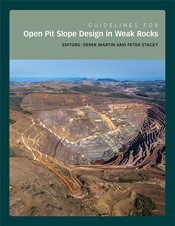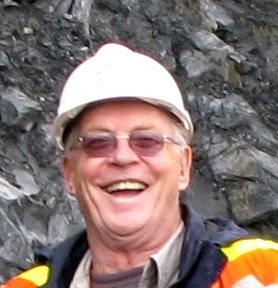Weak rocks encountered in open pit mines cover a wide variety of materials, with properties ranging between soil and rock. As such, they can provide a significant challenge for the slope designer. For these materials, the mass strength can be the primary control in the design of the pit slopes, although structures can also play an important role. Because of the typically weak nature of the materials, groundwater and surface water can also have a controlling influence on stability. This book, Guidelines for Open Pit Slope Design in Weak Rocks, is a companion to Guidelines for Open Pit Slope Design, which was published in 2009 and dealt primarily with strong rocks. Both books were commissioned under the Large Open Pit (LOP) project, which is sponsored by major mining companies. These books, Guidelines for Open Pit Slope Design Series, provide summaries of the current state of practice for the design, implementation and assessment of slopes in open pits, with a view to meeting the requirements of safety, as well as the recovery of anticipated ore reserves.

Derek Martin
Peter Stacey
Chapter Outlines
This book, which follows the general cycle of the slope design process for open pits, contains 12 chapters. These chapters were compiled and written by industry experts and contain a large number of case histories. The initial chapters address field data collection, the critical aspects of determining the strength of weak rocks, the role of groundwater in weak rock slope stability and slope design considerations, which can differ somewhat from those applied to strong rock. The subsequent chapters address the principal weak rock types that are encountered in open pit mines, including cemented colluvial sediments, weak sedimentary mudstone rocks, soft coals and chalk, weak limestone, saprolite, soft iron ores and other leached rocks, and hydrothermally altered rocks. A final chapter deals with design implementation aspects, including mine planning, monitoring, surface water control and closure of weak rock slopes.
This chapter reviews general descriptions and definitions for weak rocks.
The focus of this chapter is to highlight the technology needed for characterising weak rocks. The overall objective of the geotechnical model is to develop the shear strength of the rock mass needed for the design model. In strong rocks, the strength is usually empirically derived based on rock mass classification systems such as Rock Mass Rating (RMR) and Geological Strength Index (GSI). In weak rocks, there is a much greater reliance on laboratory testing to establish the design strengths. This aspect of the role of empirical classification systems in the design model for weak rocks is discussed in this chapter.
Unlike strong rocks, with weak rocks the strength of the intact rock is typically very close to that of the geological structures in the rock. Hence, the structural components of the geotechnical model may play a less significant role in the slope design process which is discussed in this chapter.
This chapter discusses the effect of water on the behaviour of weak rocks and provides guidance on the management of groundwater and surface water in open pits excavated in low strength materials. Detailed discussion of the hydrological processes and general water management practices for open pits can also be found in Guidelines for the Assessment of Water in Pit Slope Stability.
The descriptions given in previous Chapters highlight the characteristics of weak rocks that can potentially lead to issues for slope designers and pit operators. It is clear that the behaviour of these weak rocks results in slope performance that will likely differ from slopes in hard rocks. This chapter provides a review of open pit slope design processes in weak rocks that differ from those accepted for strong rocks, also discussed in the 2009 Guideline.
This chapter reviews the geological setting, hydrogeology, and geotechnical properties of cemented sediments with illustrations of some LOP open pit mines as examples.
The weak sedimentary mudrocks covered in this chapter are dominantly formed from quiet water accumulation of clay-sized material, less than 4 microns, coming mostly from the chemical weathering of rocks at the Earth’s surface, plus some contribution from volcanic ash and glacial rock flour.
In chapter 7, the weak sedimentary rocks were discussed as part of the waste rocks that needed to be mined to provide access to the ore. In this chapter, the weak sedimentary coals, chalk, and weak limestone are discussed form the ore being mined. Although there are several geological and geotechnical features common to these weak rocks, there are also significant differences in the respective geotechnical models which are also discussed in this chapter’s case histories.
In this chapter, the characteristics of residual soils and weathered rocks are examined. The Cowal Gold Mine located in east-central New South Wales, Australi, and the Newmont Boddington Gold (NBG) located ~130 km south-east of Perth in Western Australi are case histories that highlight some of the issues associate with open pit mining in residual soils and weathered rocks.


